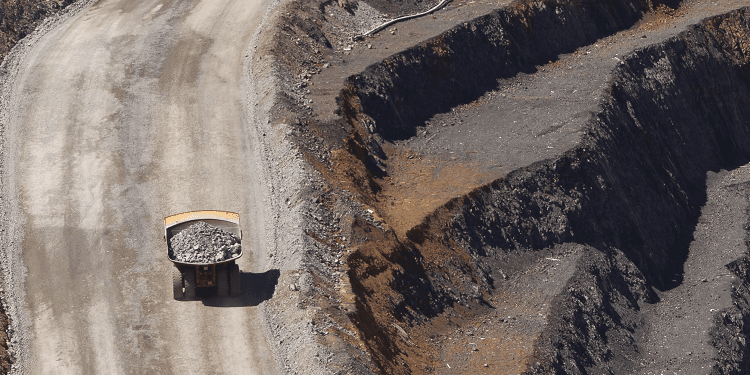The United States’ Defense Production Act (originally enacted in 1950) gives the US president authority to ensure availability of private sector resources for the production of goods and services that he determines to be necessary to secure the national defense. This includes the authority to fund such production.
In July 2019, the president of the United States directed the US Department of Defense (DoD) to source its rare earths materials from places outside of the People’s Republic of China.. The DoD’s Office of Industrial Policy (OIP) in conjunction with the Defense Logistics Agency (DLA), which is the purchasing arm for raw materials for the DoD, have taken the lead to implement this presidential directive.
The DoD is tasked solely with supplying its own needs. The directive says nothing about the DoD assisting consumer markets, nor could the DoD legally become involved in such an undertaking. That would fall under the remit of the Department of Commerce and, perhaps, the Department of Energy, neither of which have received such a specific directive.
In order to fulfill the directive, the OIP has so far issued a number of requests for information (RFIs), which are intended to solicit plans from private citizens and companies to solve the problem. These RFIs have identified individual aspects of the total rare earth permanent magnet supply chain including the separation of individual rare earths and the manufacturing of rare earth permanent magnets. The requests for proposals (RFPs) may not come from the OIP or DLA but from various requesting agencies within the DoD that have a specific need for the items, such as the US Army and Air Force. In addition, some of the RFIs and certainly any RFP would require the respondent to be the type of business organization that normally supplies the DoD.
A total domestic American rare earth permanent magnet supply chain would include:
1. Sources of the four light rare earths: Lanthanum, Cerium, Praseodymium, and Neodymium;
2. Sources of the three mid-range rare earths: Samarium, Europium, and Gadolinium; and
3. Sources of the eight heavy rare earths: Dysprosium, Terbium, Lutetium, Ytterbium, Holmium, Erbium, Thulium, and Yttrium. In the United States today there is only one rare earth mine in operation – Mountain Pass in California, which was formerly owned by Molycorp.
There are no domestic North American mines producing mid-range or heavy rare earths, yet both are necessary for the production of rare earth permanent magnets. Therefore, the DoD has determined that mined materials originating in Australia or Canada which have not been sent to China for processing qualify for the domestic American supply chain. Australian companies Lynas Corporation (ASX: LYC) and Northern Minerals (ASX: NTU) are producing light and mid-range rare earths, and heavy rare earths respectively. Many American, Canadian, and Australian companies stand poised to develop rare earth deposits of all three types into producing mines.
There are also no domestic American companies equipped to commercially separate mixed rare earth mineral concentrates into the purified individual rare earths necessary to make magnets or any other rare earthenabled products. The issue is not down to a lack of capability. Solvent extraction, the separation technology widely used in China and Europe, was perfected and developed for light rare earth separation in Europe and the US after World War II. Mid-range and heavy rare earth separation by ion exchange was also perfected in Europe and the US, but the minerals with those rare earths were imported from Africa until the late twentieth century when the now-principal source of them, the so-called “ionic clays”, were discovered and brought into production in southern China.
There is an opportunity in the US to restart rare earth separation not only with traditional solvent extraction but with some other technologies, such as Molecular Recognition Technology, Continuous Ion Exchange, Rapid Solvent Extraction, and Electrochemically Assisted Chromatography – all of which have been developed primarily in the US but none of which so far have been demonstrated at scale (i.e. commercially). The DoD seems open to offering financial assistance for these new technologies, but the unresolved issue is the size of the facility necessary to make it profitable. It does not seem that the needs of the DoD are large enough for this purpose, so the government will have to decide whether or not to subsidize such operations.
Today, there are no rare earth metalor alloy-making operations in North America. So, the DoD has to decide whether it will subsidize the creation of at least enough to fulfill its own needs. The US has one specialized facility for making rare earth permanent magnet alloys. It is not in use but it would be easy to put back into production. Its capacity is 750 tons per year – too low even for the DoD (the actual tonnage of rare earth permanent magnets used annually by the DoD is classified, but it’s certainly more than 750 tons!). Finally, no domestically-owned magnet manufacturer in the US today makes rare earth permanent magnets from domestically-produced alloys.
The United States has all of the knowhow to recreate a total domestic American-owned and operated rare earth permanent magnet supply chain for the defense department, but does it have the will, or the capital? This is for the DoD to decide. Private equity would only step in if the business being created can be (not could be) profitable. What size industry would be needed for profitability, and could it compete with China? I think so.












